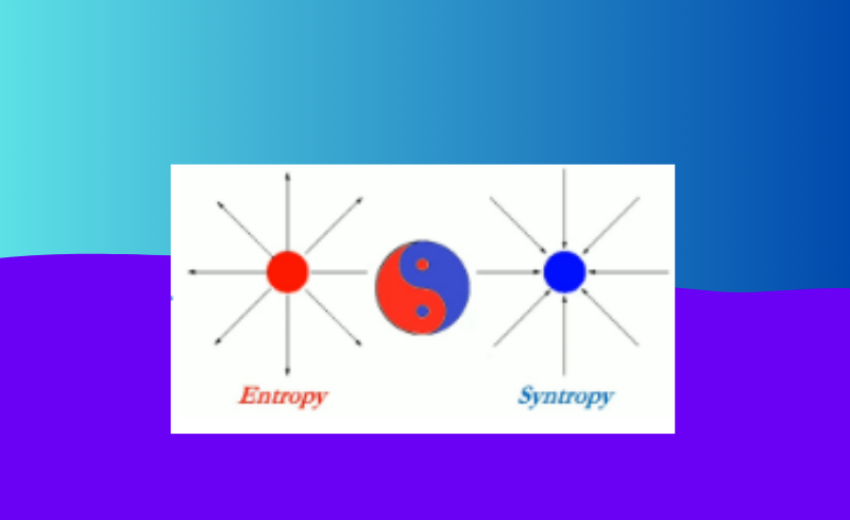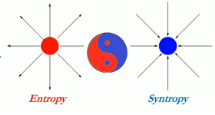Syntropy, a concept denoting the tendency towards order, harmony, and complexity, finds intriguing parallels within the rich tapestry of Sikhism, a spiritual tradition emphasizing unity with the divine, selfless service, and social justice. While syntropy is a term rooted in scientific discourse, Sikhism offers a spiritual lens to understand and embody syntropic principles in everyday life. This article explores the mutual relevance of syntropy and Sikhism, highlighting their interconnectedness and shared emphasis on unity, growth, and harmony.
Syntropy: A Scientific Perspective
To comprehend syntropy, one must first juxtapose it with its counterpart, entropy. Entropy, a fundamental principle in thermodynamics, describes the natural tendency of systems towards disorder, randomness, and equilibrium. In contrast, syntropy represents the counterforce—a propensity towards order, organization, and complexity [1]. Coined by Luigi Fantappiè in the early 20th century, syntropy offers a holistic perspective on the dynamics of systems, encompassing physical processes and biological, social, and philosophical phenomena [2].
Sikhism: A Spiritual Path Towards Unity
Sikhism, founded by Guru Nanak in the 15th century, emerged as a response to the prevailing socio-religious context of inequality, superstition, and spiritual disillusionment. At its core, Sikhism advocates for the pursuit of unity with Ik Oankar, the formless divine, through selfless service, meditation, and righteous living. The Sikh scriptures encapsulated in the Guru Granth Sahib serve as a timeless guide for seekers on the path of enlightenment, offering profound insights into the nature of reality, human consciousness, and the divine [3].
Syntropy and Sikhism - The Mutual Relevance
Syntropy manifests in various aspects of human endeavors, with a drive towards growth, harmony, and creating order and complexity. In Sikhism, the concept of syntropy can be related to the spiritual journey and the pursuit of union with the divine. Syntropy and Sikhism have several common aspects, which provide the basis for their mutual relevance. Some of these aspects are described as follows:
-
Unity and Oneness: At the heart of syntropy and Sikhism lies the principle of unity. Syntropy posits that all phenomena strive towards integration and coherence, seeking to manifest a higher order of complexity [4]. Similarly, Sikhism teaches the intrinsic oneness of creation, asserting that the divine permeates every particle of existence. The Sikh concept of Ik Onkar, meaning "One God," underscores the indivisible unity of the cosmos, transcending distinctions of caste, creed, and nationality. Thus, syntropy and Sikhism celebrate the interconnectedness and interdependence of all beings, acknowledging the underlying unity that binds the universe together [5].
-
Selfless Service (Seva) and Syntropic Action: Seva, or selfless service, occupies a central place in Sikh philosophy and practice. Rooted in the ethos of compassion and humility, seva embodies the spirit of syntropy by fostering harmony, cooperation, and collective well-being. Whether through feeding the hungry, caring for the sick, or participating in community projects, Sikhs engage in acts of seva to express gratitude to the divine and serve humanity [6]. Individuals embody the syntropic principle [7] of promoting order and harmony in society by transcending the ego and serving others without expectation of reward.
-
Acceptance of Divine Will (Hukam) and Syntropic Surrender: In Sikhism, the concept of Hukam, or divine will, emphasizes accepting the cosmic order and surrendering to the divine plan [8]. Just as syntropy acknowledges the inherent orderliness of the universe, Sikhism teaches that everything unfolds according to the divine Hukam. By aligning one's will with the Hukam, individuals cultivate a sense of inner peace, trust, and equanimity, even in the face of adversity. This syntropic surrender entails letting go of the ego's desires and attuning oneself to the harmonious flow of existence, harmonizing with the cosmic order.
- Spiritual Evolution and Growth: Syntropy and Sikhism recognize the importance of growth, evolution, and self-transcendence [8-9]. Syntropy asserts that systems evolve towards higher levels of organization and complexity over time, driven by internal and external forces. Similarly, Sikhism emphasizes the spiritual journey of individuals towards enlightenment and liberation (mukti), wherein the soul evolves through successive stages of consciousness. By practicing self-discipline, meditation, and virtuous living, individuals in Sikhism strive to overcome ignorance (avidya) and ego (Haumai), thereby ascending towards a state of unity with the divine—a manifestation of syntropic growth and evolution [10].
-
Equality and Social Justice: Sikhism champions equality, justice, and human rights for all individuals, irrespective of social distinctions. The concept of Sarbat da Bhala, meaning "well-being for all," underscores the Sikh commitment to creating a just and inclusive society. Sikhs actively advocate for social reform, challenge discrimination, and stand in solidarity with the marginalized and oppressed [11]. This pursuit of social justice aligns with the syntropic imperative of fostering harmony, equity, and balance in human affairs, thereby advancing the collective welfare of society.
-
Interconnectedness and Interdependence: Both syntropy and Sikhism underscore the interconnectedness and interdependence of all phenomena. Syntropy highlights how systems exhibit emergent properties and interconnectedness, leading to the emergence of higher levels of organization and complexity. Similarly, Sikhism emphasizes the interconnectedness of all creation, teaching that every being is interconnected and dependent on each other for sustenance and growth. This recognition of interdependence fosters a sense of compassion, unity, and responsibility toward all living beings, echoing the syntropic principle of promoting harmony and integration within systems.
-
Transcendence of Dualities: Syntropy and Sikhism both advocate for the transcendence of dualities and the realization of underlying unity [4-5]. Syntropy challenges the notion of fundamental randomness and disorder, suggesting that apparent chaos may conceal deeper patterns of order and organization. Similarly, Sikhism encourages individuals to transcend the dualities of good and evil, pleasure and pain, and recognize the underlying unity of existence. By embracing a holistic worldview that transcends dualistic thinking, individuals can cultivate a deeper understanding of reality and align themselves with the syntropic currents of the universe.
- Environmental Stewardship: Both syntropy and Sikhism emphasize the preservation of ecological balance and the importance of environmental stewardship [2, 12-14]. Syntropy recognizes natural systems' inherent order and interconnectedness, highlighting the need to safeguard biodiversity, restore ecosystems, and promote sustainability. Similarly, Sikhism teaches the concept of Vand Chakna, meaning "sharing with others" and "caring for the environment." Sikhs are called to be responsible stewards of the earth, respecting all life forms and preserving the environment for future generations [8]. By cultivating a harmonious relationship with nature, individuals can contribute to the promotion of syntropy and the well-being of the planet.
- The Quest for Truth and Wisdom: Syntropy and Sikhism advocate for the quest for truth, wisdom, and spiritual enlightenment. Syntropy encourages scientific inquiry and the pursuit of knowledge to uncover the underlying principles governing the universe [4]. Similarly, Sikhism emphasizes the importance of seeking spiritual wisdom and understanding the true nature of reality [6, 8]. Through meditation, self-reflection, and scripture study, individuals in Sikhism strive to attain a more profound realization of the divine truth. By embracing the quest for truth and wisdom, individuals can align themselves with the syntropic currents of the cosmos and contribute to the evolution of consciousness.
Conclusion
The intersection of syntropy and Sikhism illuminates a profound convergence of scientific inquiry and spiritual wisdom. Through their shared emphasis on unity, selflessness, acceptance, growth, and justice, syntropy and Sikhism offer complementary perspectives on the fundamental principles underlying existence. By integrating these principles into their lives, individuals can cultivate a more profound sense of harmony, purpose, and interconnectedness, thereby realizing a more syntropic and spiritually enriched world.
References
- Vannini, A. (2007). Entropy and Syntropy: From mechanical to life science. NeuroQuantology, 3(2). doi:10.14704/nq.2005.3.2.64
- Bode, W. (2015). Biosphere and Syntropy: What does forestry have to do with? Food Security and Food Safety for the Twenty-first Century, 273-288. doi:10.1007/978-981-287-417-7_24
- Singh, D. P. (2005). Sri Guru Granth Sahib-A Universal Perspective, The Sikh Review, India. 53 (4), 16-21.
- Words, M. M. (2019). Syntropy: The answer to life, the universe, and everything. Independently Published. ISBN: 9781980657903
- Singh, D. P. (2009). Interdependence of Things: A Gurbani Perspective, The Sikh Review, India 57(11). 11-14.
- Singh, D. P. (2014). Relevance of Sri Guru Granth Sahib in 21st Century, The Sikh Bulletin, 17 (7& 8). 18-22.
- Corpo, U. D. (2018). Syntropy, love and truth. Independently published. ISBN-13: 978-1718147430
- Singh, D. P. (2019). Universal Relevance of Guru Nanak’s Teachings, (Part-I), The Sikh Review, India. 67 (11), 15-21; (Part -II), The Sikh Review, India. 67 (12). 19-30.
- Corpo, U. D., & Vannini, A. (2015). Syntropy: The spirit of love. ICRL Press. ISBN-13: 978-1936033171
- Singh, D. P. (2021). Guru Nanak’s Philosophy of Social Change. The Sikh Review, India. 69(11). 19-22
- Singh, D. P. (2020). Guru Nanak: The Founder of a New Social Order, The Sikh Review, India. 68(4). 19-28.
- Singh, D. P. (2010). Ecological Concern in Sri Guru Granth Sahib, Abstracts of Sikh Studies, India. XII (4). 8-11.
- Singh, D. P. (2010). Environmental Concerns in Guru Granth Sahib, The Sikh Review, India. 58 (3). 16-22.
- Singh, D. P. (2021). Ecological Teachings in Sikh Theology. Academia Letters, USA. Article 2653.













